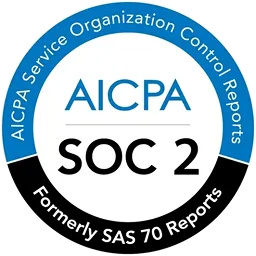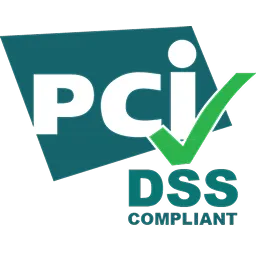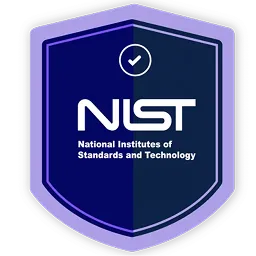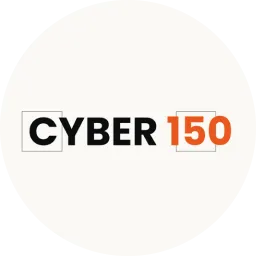Static access rights introduce gaps and vulnerabilities. If not managed, prolonged access can increase the risk of accidental misuse or intentional harm. Ephemeral access emerges as a proactive measure to prevent such issues. In this article, we'll understand this access management strategy.
Previously, to avoid the hassle of continuously granting and revoking employees' permissions, IT teams used to grant all access rights (most, if not all) to employees, contractors, and service accounts beforehand. However, this approach often resulted in them holding more access privileges than necessary.
For example:
- When a marketing employee joins a company, they are generally added to the marketing channel in Slack. However, previously, IT teams would add new employees to all channels, including different project channels, tech-support channels, and others. This approach grants access to information from other departments that is unnecessary for the marketing employee, raising concerns about the misuse of sensitive information for wrong purposes.
- Another example is a financial department intern who specifically requested read-only access to financial reports. However, following the IT team's usual practice of granting full access upfront, the intern was also permitted to edit and delete the reports. This raises the risk that the intern may unintentionally or intentionally alter or delete critical data within the reports.The potential risks of this approach become evident in the event of a security breach. Unauthorized users who gain access to an employee's account or credentials can exploit the situation to compromise the organization's sensitive data, resulting in data loss or damage to the organization's reputation. Adopting more granular access controls, such as ephemeral access, is crucial to address these vulnerabilities. This proactive measure helps mitigate risks effectively, safeguarding the organization's sensitive information. But what is Ephemeral Access?
What Is Ephemeral Access

Ephemeral access is a cybersecurity tactic IT teams use to grant users (workforce) temporary access rights or permissions to SaaS apps, networks, or systems.
This strategy lowers the likelihood of unauthorized access or insider threats and reduces the attack surface.
So, basically, an ephemeral access strategy aims to help enhance an organization's overall security posture and maintain a well-governed access environment.
How Does Ephemeral Access Work?

Ephemeral access operates by granting access rights precisely when needed (just in time) and by providing users with only the minimum level of access required to perform their tasks (principle of least privilege).
Additionally, this access strategy imposes a time limit on the access granted, meaning users only have access for a specific duration. This helps strengthen security and minimize potential risks associated with prolonged access.
But, since this approach involves granting temporary access permissions, it necessitates the creation of specific accounts.
So, the question arises—which account is precisely used for this purpose? Well, there is a specific account created for granting ephemeral access, which is known as an ephemeral account.
Ephemeral Account
An Ephemeral account is a temporary account used for specific authorized tasks. It is designed to be deactivated after a certain period of time.
They are commonly allotted to contractors, cloud computing platforms, and in-house users for project completion and testing purposes.
But why exactly is ephemeral access important? Let’s find out.
Why Is There A Need For Ephemeral Access?

There are 3 major reasons why you need to implement ephemeral access within your organization:
1. Reduces Vulnerability
Ephemeral access limits users' access to critical SaaS apps and data for short durations, reducing the likelihood of security breaches or unauthorized access to sensitive data.
So, even if credentials are compromised, the impact is lessened as permissions expire quickly, reducing the window of opportunity for attackers.
2. Effectively Mitigates Risk
Ephemeral access helps mitigate the risk associated with prolonged access periods. In the event of a user's privileges being compromised, the potential for misuse by attackers is restricted due to the limited timeframe for access.
3. Helps Adhere To Regulatory Compliance
Ephemeral access supports organizations in meeting regulatory requirements by implementing strict access control measures aligned with the principle of least privilege. This ensures that access to sensitive data is tightly controlled and monitored, helping organizations adhere to compliance mandates.
Now, let's find out who actually needs ephemeral access.
Which Organizations Need Ephemeral Access?

The need for ephemeral access is crucial for all businesses that prioritize security, especially those regularly dealing with sensitive data. This includes sectors such as:
- Healthcare
- Financial services
- Technology firms
- Government agencies
Additionally, it's important for businesses that work with third-party contractors, as ephemeral access provides a secure way to manage their access privileges without giving up complete control.
In short, any organization striving to maintain high-security standards can benefit from implementing an ephemeral access cybersecurity strategy.
But what are its use cases, and who is supposed to use ephemeral access?
Uses Cases Of Ephemeral Access

Ephemeral access is commonly utilized in various scenarios, serving a range of purposes such as:
- Use Case 1# Ephemeral Access In Cloud Computing Environment
Ephemeral access plays a crucial role in cloud computing environments, providing temporary access to virtual machines, systems, and cloud resources.
Many cloud service providers offer features that enable users to obtain temporary access tokens or credentials customized for specific tasks.
These temporary access permissions allow users to perform necessary actions within the cloud environment, such as deploying applications, managing resources, or conducting testing, without requiring permanent access credentials.
This enhances security by limiting access to designated timeframes and promotes efficient resource utilization and management within the cloud infrastructure.
- Use Case 2# Role Of Ephemeral Access In Managing Remote Access
Ephemeral access serves as a pivotal mechanism for providing time-limited access to internal networks or systems.
This functionality is particularly valuable for accommodating remote workers or third-party contractors who require temporary access to organizational resources.
By enforcing ephemeral access, your team can ensure that remote users have the necessary access to perform their tasks within set timeframes, enhancing security and control over network access.
Additionally, this approach helps streamline access management processes, allowing your team to efficiently grant and revoke access as needed while minimizing the risk of unauthorized access.
- Use Case 3# Zero Trust Security Framework & Ephemeral Access Strategy Integration
Within the framework of zero trust security, ephemeral access plays a pivotal role as a fundamental principle.
This approach mandates continuous authentication and reevaluation of access rights, ensuring that users are granted temporary access only when needed and for specific purposes.
By integrating ephemeral access into the zero trust model, organizations can enforce stringent access controls, minimize the risk of unauthorized access, and bolster overall security posture.
- Use Case 4# Ephemeral Access Contribution In Identity & Access Management
In Identity and Access Management (IAM), ephemeral access serves as a strategic approach to limiting unnecessary or prolonged access to sensitive data or systems.
Ephemeral access aligns with the principle of least privilege and reinforces strict access controls within IAM frameworks by granting access permissions only when needed.
This approach enhances security by ensuring that individual users have the minimum access required for their tasks. This reduces the risk of unauthorized access and improves the overall effectiveness of IAM strategies.
Prevent Prolonged Access Risk By Enforcing Ephemeral Access
By now, you may have realized that enforcing ephemeral access controls is crucial. It helps prevent users from holding prolonged access and, thus, minimizes the risk of unauthorized entry and data breaches.
However, a dedicated solution is needed to ensure the effective enforcement of ephemeral access. Manually implementing ephemeral access can be inefficient, consuming unnecessary time, draining efforts, and potentially introducing errors into the process.
So, to avoid such issues, you can consider implementing an access management solution like Zluri.
Zluri's access management platform simplifies the enforcement and management of access controls.
It enables your team to thoroughly implement different access controls such as PoLP, JIT, RBAC, SoD, and more, ensuring only the right users hold access to apps and restricting unauthorized ones.
By enforcing these policies, Zluri's access management minimizes surface attacks and safeguards SaaS app data.
Furthermore, with Zluri's access management, your team can even monitor whether the control has been implemented properly and is fulfilling its intended purpose. Also, your team can make changes in the controls to improve its effectiveness.
In short, with the right solution, like Zluri's access management, enforcing access controls becomes significantly easier and yields more effective results.







.png)

.svg)














